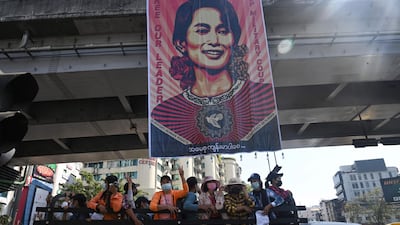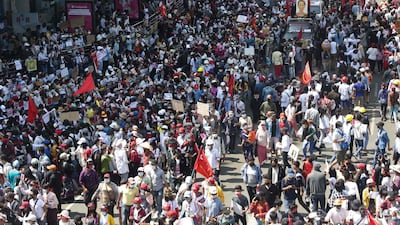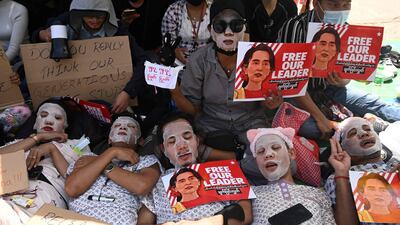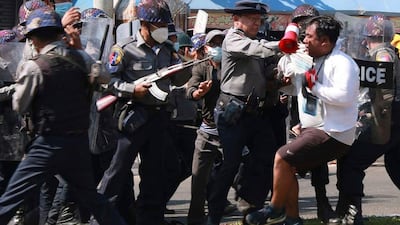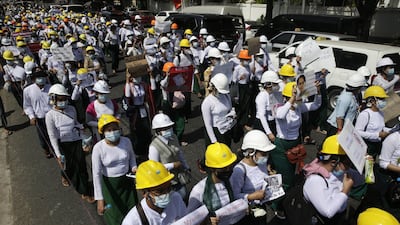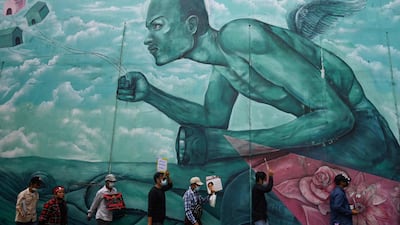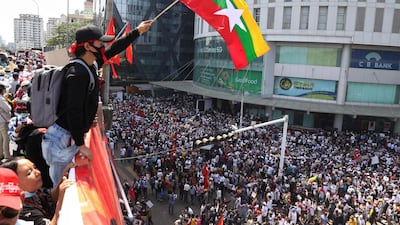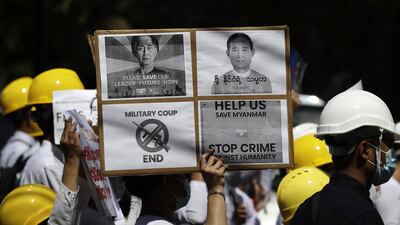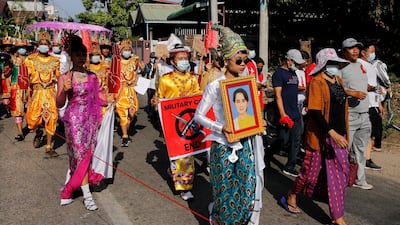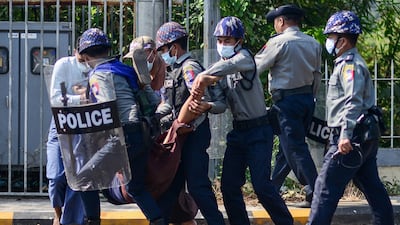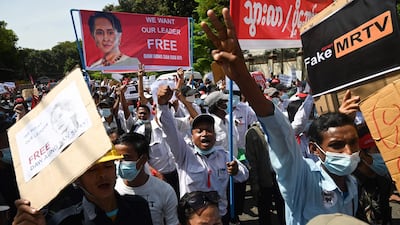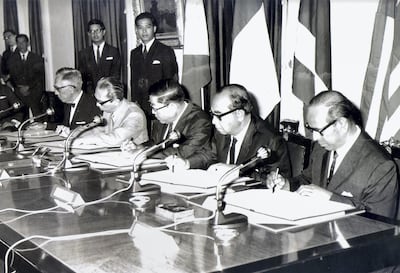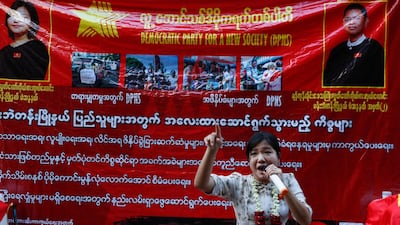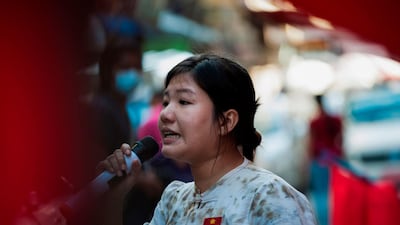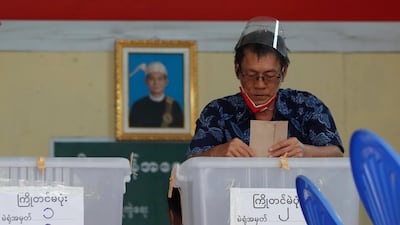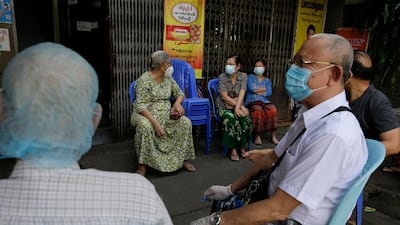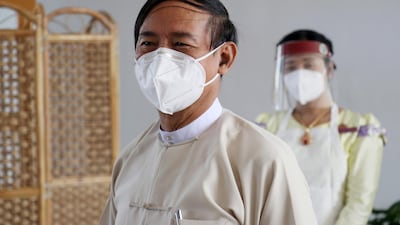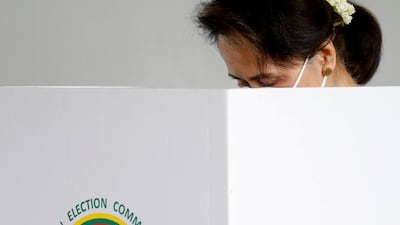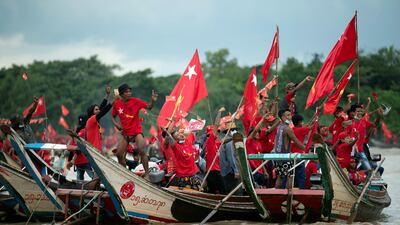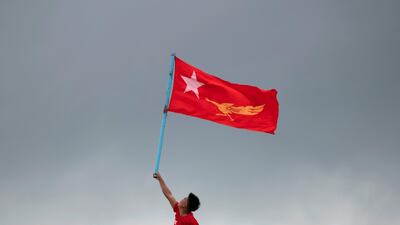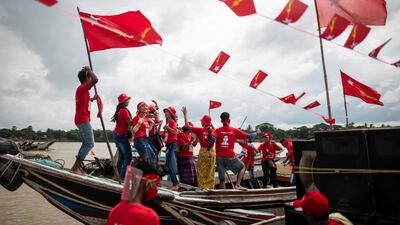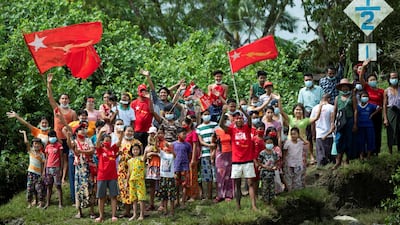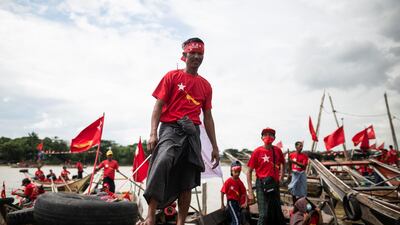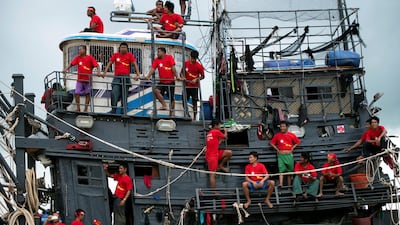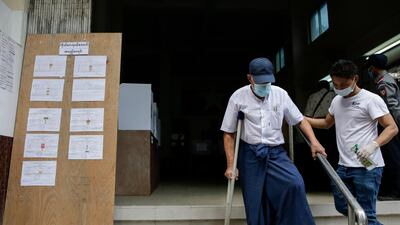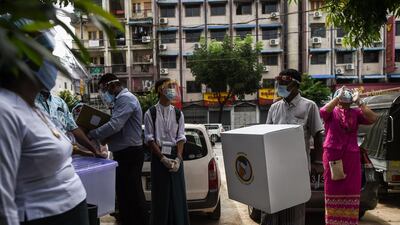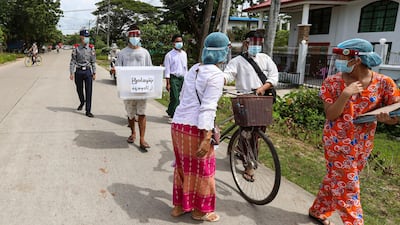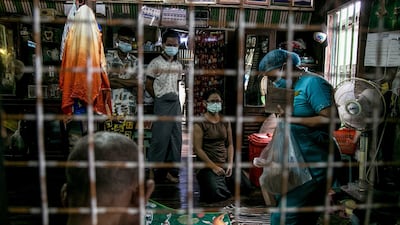Much has been said and written about the global response to the unfolding crisis in Myanmar, where the long-dominant military staged a coup earlier this month. Experts have discussed the deep influence of neighbouring China, an important economic partner, and the likely impact of American sanctions on the strategic calculus of the South-East Asian nation's junta.
Others have focused on the sophisticated way the military brass orchestrated its coup against Aung San Suu Kyi's democratically elected government, with which it had shared power for half a decade.
Somewhat missing in the discussions, though, has been the role of Myanmar's influential neighbours and, more broadly, the Association of South-East Asian Nations (Asean), in legitimising the junta’s behind-the-scenes rule and atrocities in recent decades.
On the most fundamental level, the events in Myanmar have exposed Asean’s dysfunctional decision-making process. They have also laid bare the opportunism of key nations in the region.
Asean was born in the crucible of the Cold War, as the US and the Soviet Union jostled for influence in post-colonial South-East Asia. Its antecedents were the now-defunct, pro-US South-East Asia Treaty Organisation and the "non-aligned" Greater Malayan Confederation – better known as Maphilindo – which was composed of Malaysia, the Philippines and Indonesia. A decade into the Cold War, and just years into the so-called "Konfrontasi" skirmishes between Indonesia and the newly emerging Malaysian Federation from 1963 to 1966, the establishment of an inclusive regional organisation became a strategic imperative.
In a tale of strategic foresight and visionary leadership, five countries – Indonesia, Malaysia, the Philippines, Singapore and Thailand – established Asean in the late 1960s. Their goals included preserving national strategic autonomy, preventing intra-regional conflicts amid long-standing disputes and creating a semblance of peace and prosperity despite the proxy conflicts between the two superpowers.
The upshot is the establishment of arguably the most successful regional integration experiment outside of the West. Over the next half-century, Asean would evolve into an increasingly mature and all-inclusive organisation, having absorbed the region's communist and post-communist regimes following the Vietnam War.
Asean’s regional integration is impressive.
Years of sustained dialogue and a shared sense of destiny meant that its members became increasingly willing either to downplay or fully resolve their territorial disputes, from the Philippine-Malaysian conflict over oil-rich Sabah to the Indonesia-Malaysia maritime disputes over Pulau Ligitan and Pulau Sipadan. As Asean's de facto leader, Indonesia convinced Thailand and Cambodia to resolve their border dispute involving the area surrounding the Temple of Preah Vihear through international adjudication.
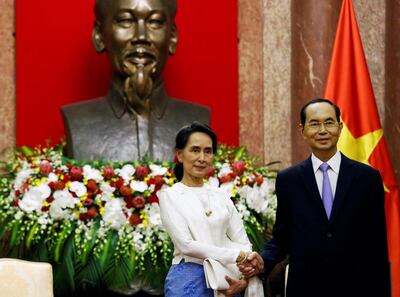
The bloc, meanwhile, finalised a trade deal among its member states – called the Asean Free Trade Area Agreement – leading to reductions in tariffs to between zero and five per cent. Success encouraged the region to pursue fuller integration through an Asean Economic Community, which, when established, aims to create a single market and production base for the flow of goods, services, capital and labour in the region.
Asean proved so successful in fostering peace and prosperity in the region that by the 1990s, it aspired to become the engine of pan-regional integration across the Asia-Pacific. Through mechanisms such as the Asean Regional Forum, member states provided a key post-Cold War platform for institutionalised dialogue among major powers, namely the US, China, India, Japan and Russia.
In the recent past, however, the lack of internal coherence and global relevance has been exposed – and the Myanmar crisis is its most potent expression.
The twin principles that facilitated Asean's expansion through the decades are the mushawara and muafakat, two terms originating from Arabic and meaning consultation and consensus, respectively. Almost every one of the organisation's important geopolitical decisions was made after extensive consultation and painstaking consensus-building efforts.
On the surface, this seemed a perfectly reasonable way to foster co-operation and common understanding among extremely diverse nations, including impoverished post-communist states, authoritarian kingdoms, unruly middle-income democracies and a wealthy city-state. However, the principle of consensus-building quickly turned into unanimity-based decision-making in practice, setting the stage for institutional paralysis in times of crisis. An overemphasis on inclusiveness also meant its embracing of the region's more repressive regimes.
And so, when the Myanmar junta introduced largely cosmetic political reforms a decade ago, Asean was quick to hail them as a sign of democratisation – as did the Obama administration and much of the West. Myanmar even hosted a World Economic Forum meeting in 2013. Key members such as Singapore and Thailand poured billions of dollars into the country, even as the generals retained veto power over vital organs of the state, including the legislature.
When it became clear that the armed forces, known as Tatmadaw, engaged in atrocities against the Rohingya, Myanmar's largest Muslim minority group, Asean either turned a blind eye or refused to take a tough stance. Malaysia and Indonesia – both Muslim-majority countries – were the only member states to call for more decisive action against the Tatmadaw amid allegations of ethnic cleansing.
It was precisely Asean’s collective complacency, if not culpability, that emboldened the junta to launch its coup against Suu Kyi's popular civilian government on February 1. But even that wasn’t enough to mobilise a concerted pushback by the regional body. Only Malaysia, Indonesia and Singapore condemned the move.
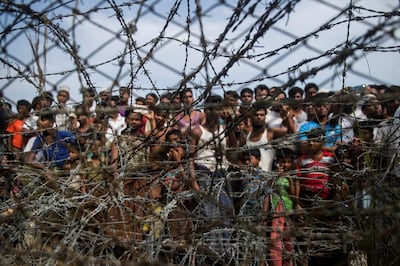
A vast majority of Asean's member states were either silent days into the crisis or, as in the case of Cambodia and the Philippines, dismissed what has since become an international crisis as nothing but an "internal matter".
Thailand, one of Asean's founding members and a key source of investment and remittance for Myanmar, has been among the biggest enablers of the coup. Thai Prime Minister Prayuth Chan-ocha, a former general who himself seized power in his country through a military takeover in 2014, has emphasised the need for the two nations to "maintain good relations" with each other.
No wonder then that Myanmar's junta has formally sought the Thai leadership's assistance in managing the post-coup landscape, a reflection of co-ordination between these two regimes.
They say you can choose your friends but not your neighbours. But most of Asean's member states, particularly Thailand, chose to be friends with Myanmar’s generals even though it meant emboldening them to grab power and, thereby, overrule the overwhelming mandate of its people.
Richard Javad Heydarian is a professorial chairholder in geopolitics at Polytechnic University of the Philippines and author of, among others, 'The Indo-Pacific: Trump, China and the New Struggle for Global Mastery'
